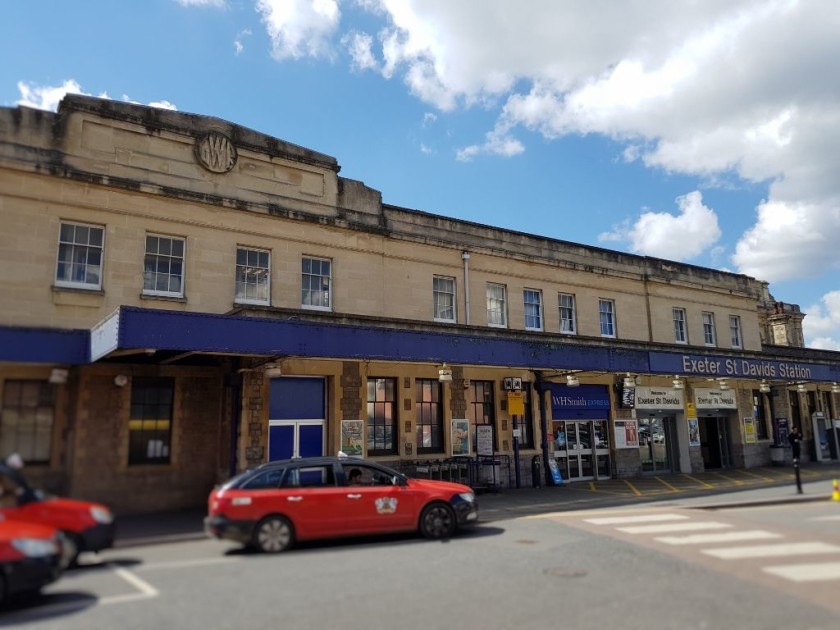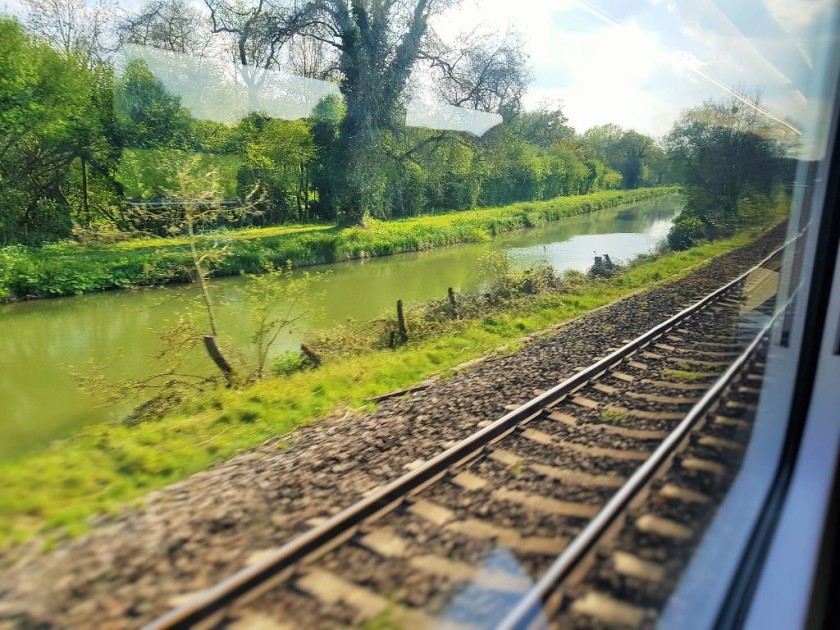Related Content
Content
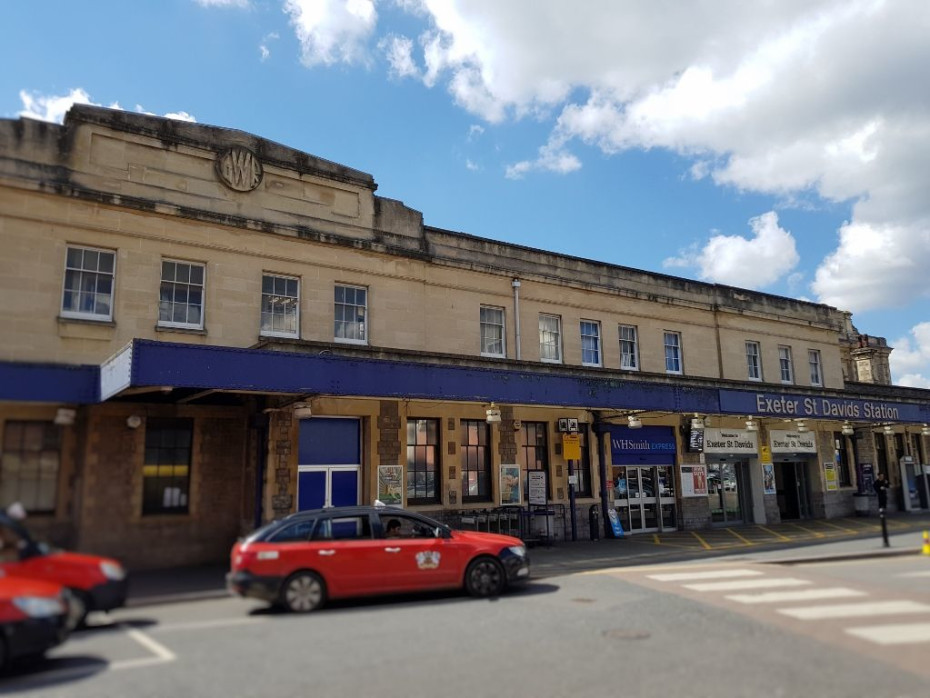
Exeter St. Davids (Exeter)
Share
At a Glance
Accessibility
Step Free
Onward Travel
Taxi Rank
Those with an interest in the history of railway stations will find much to enjoy when taking a train from and to Exeter St. Davids.
All travellers will appreciate the most recent redevelopment of the station which provided a brightened entrance hall and elevators which provide a step-free route to and from the trains which use platforms/tracks 3 – 6 (all of GWR’s long-distance train services and CrossCountry’s trains use this part of the station).
But many parts of Exeter St. Davids date back to its second rebuild in 1864, the footbridges which span the station were put in place in 1912, while the signage on the footbridges and the rather fabulous art-deco frontage at the station, still look pretty much as they did when they were unveiled in 1938.
Exeter St. Davids has always been a busy interchange station as it where the two main routes between London and Devon, which are associated with the former Great Western and Southern Railways meet.
Which is why there is a choice of two entirely different routes when travelling between Exeter and London by train.
Arriving by train:
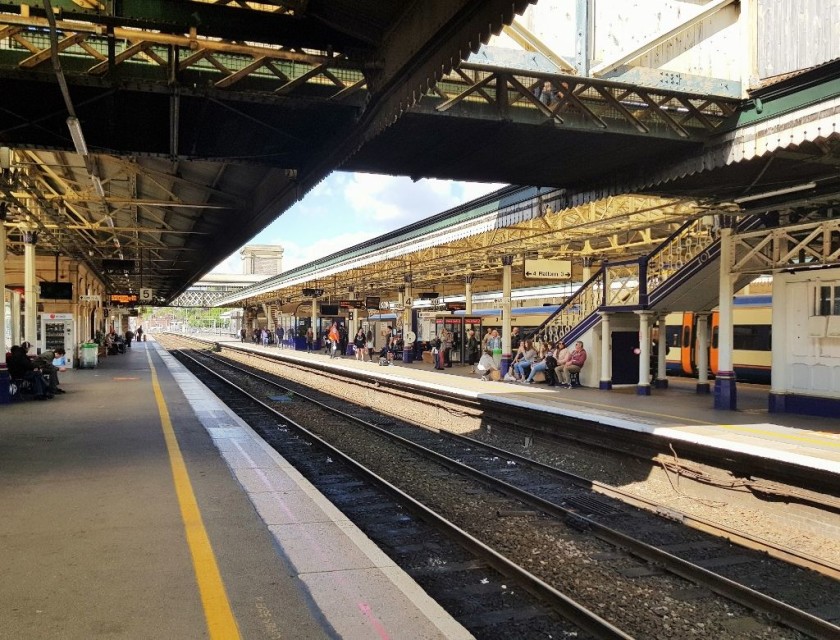
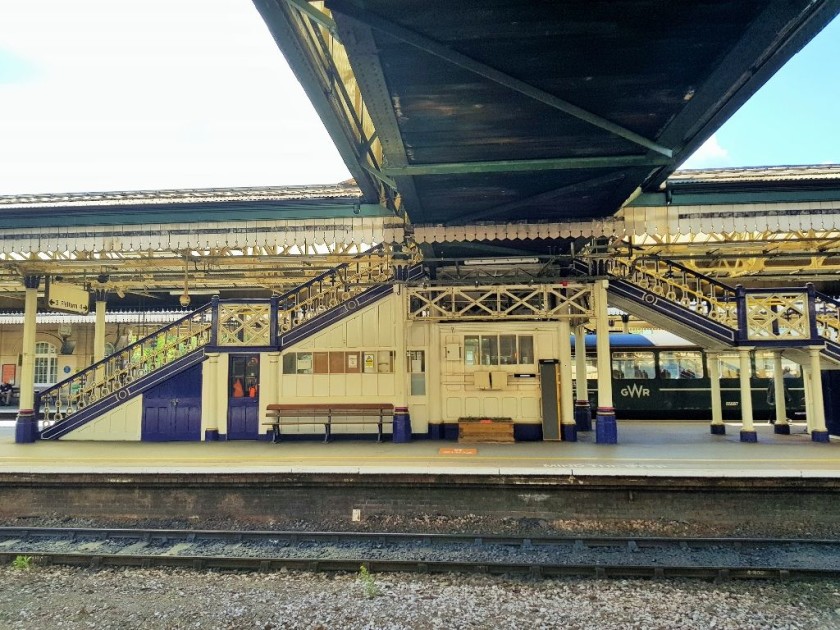
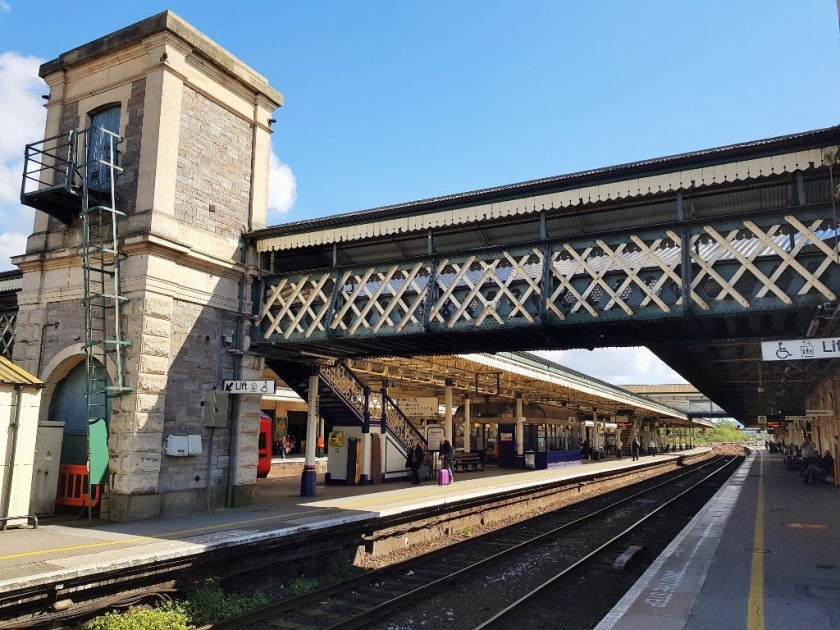
There are two footbridges which span the station and lead to the exit.
(1) the main footbridge will be towards the front of trains which have travelled from the Taunton direction, and by the rear of trains that arrive from Plymouth.
Though despite being the main footbridge it can only be accessed by using the stairs.
(2) The other footbridge, at the northern end of the station, is the bridge that has been provided with lifts/elevators.
You may have to walk along the platform and pass the main footbridge in order to access these these lifts/elevators.
On platforms 5/6 the only access to this second bridge is by using the elevators, so if your train arrives at them and you don't mind taking the stairs, using the main footbridge will be the quickest route to the exit.
Departing by train:
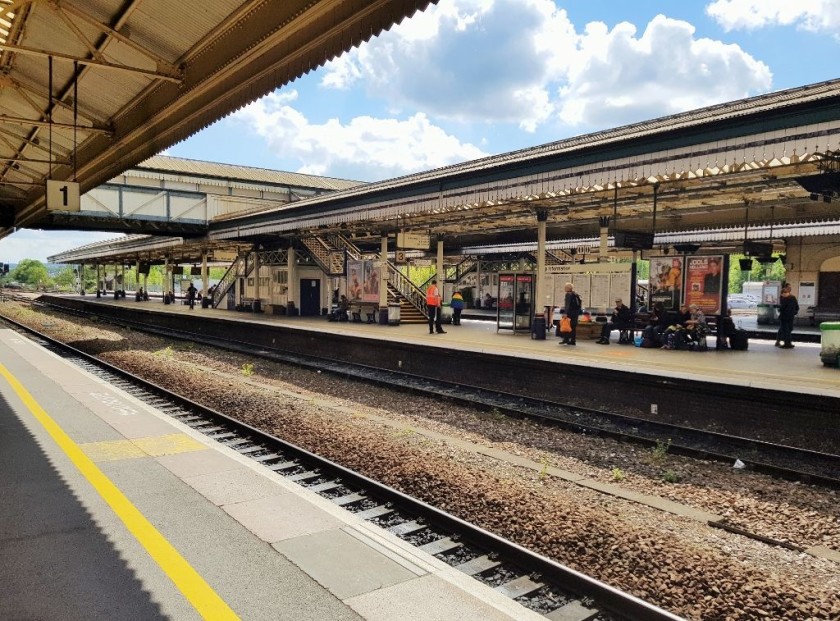
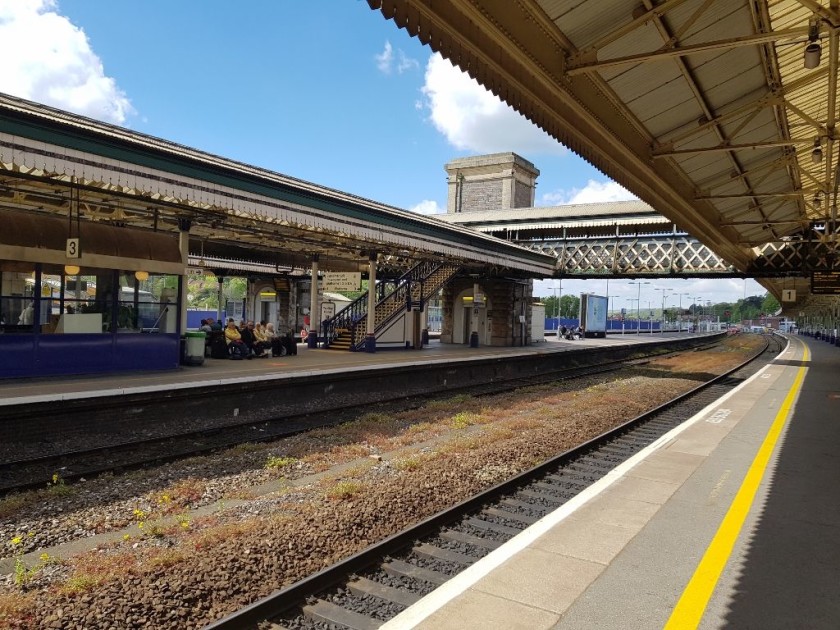
At Exeter St. Davids, the express train to Plymouth and Penzance tend to depart from platform 4, while the GWR trains to London Paddington and the CrossCountry trains to Bristol, Birmingham, northern England and Scotland tend to depart from platform 5.
If you’re happy to use the stairs to access these trains, the quickest route is to use the bridge that you’ll see on the left when exiting the entrance hall and stepping on to platform 1; but r if you want to use the elevators you’ll need to turn right and use the alternative footbridge
The trains to London Waterloo usually depart from platform (track) 1 which is right beside the entrance hall.
To and from the city centre:
The fact that there is another station in the city named Exeter Central is a hint that Exeter St. Davids is some distance from the city centre.
Not only is the heart of the city, the High Street and cathedral a 20-30 min walk from St. Davids, it also a fairly steep ascent.
If you won’t baulk at this, the quickest route is to head straight ahead from the main exit of the station, going across the car park and to use the clearly signposted passage way to the right of the Premier Inn hotel.
However, if you don’t want to walk or take a taxi there are several bus routes which stop just outside Exeter St. Davids station and connect it to the city centre, the most frequent of which is route H (destination Digby), though routes 5B and 6 are also available.
The bus ticket will cost £2 and you can pay the driver when boarding.
As the walking route is downhill, it's less arduous to reach St. Davids when travelling to the station on foot, but look out for the steps and pathway off to the left when heading down St. Davids Hill.
It's by the junction with Howell Road and is a short cut, which will save at least 5 minutes.
Train service summary:
|
Train Operating Company: |
Destinations: |
|
(1) London Paddington via Taunton, Westbury, Newbury and Reading |
|
|
London Waterloo via Yeovil and Salisbury |
|
|
(1) Aberdeen via Taunton, Bristol, Birmingham, Derby, Sheffield, Leeds, York, Newcastle and Edinburgh |
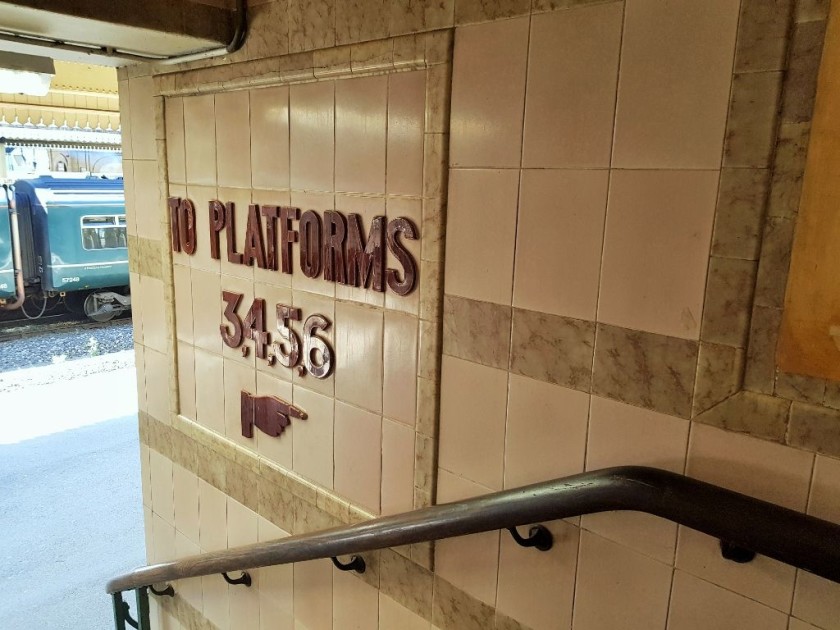
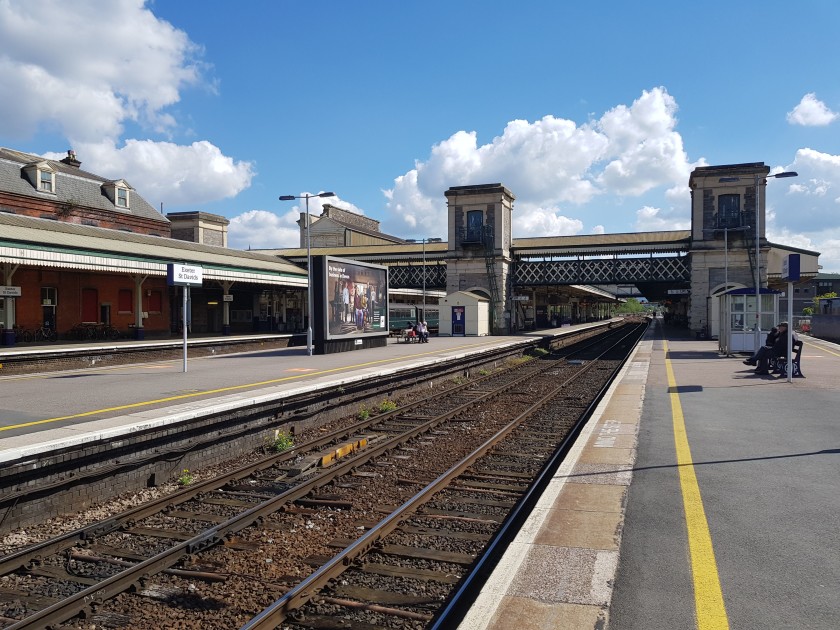
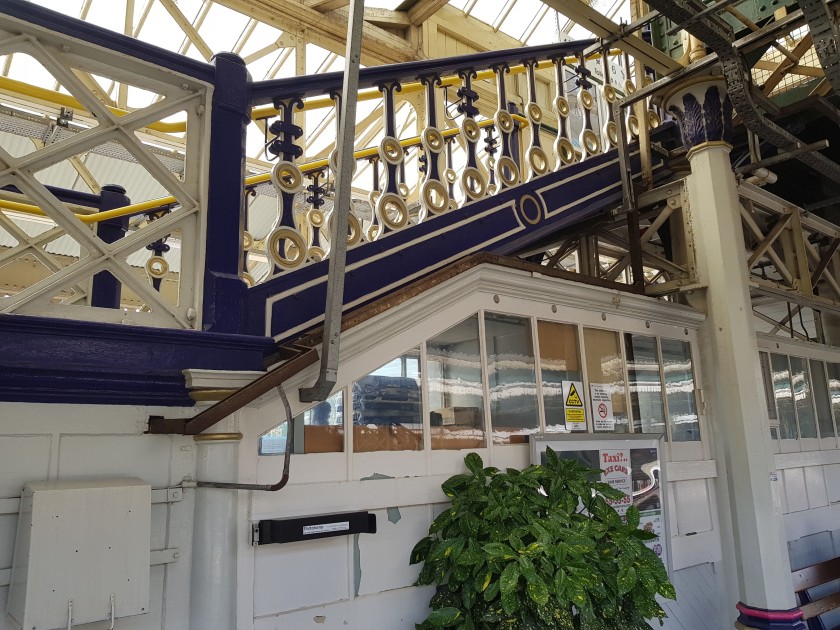
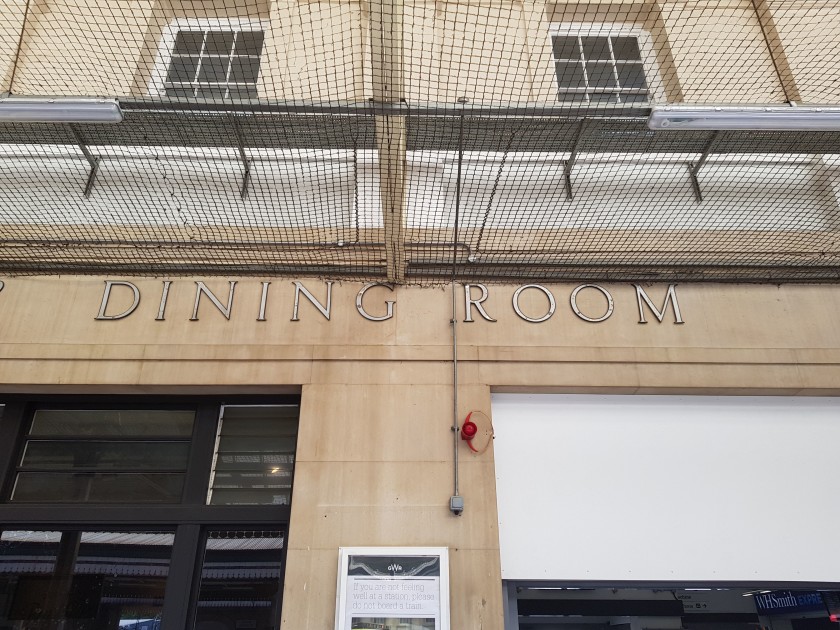
Journeys
# Jump to a directionDirections
Journeys to Exeter St. Davids
Jump to directionsEdinburgh to Exeter by train
London to Exeter by train
This second version of ShowMeTheJourney is exciting and new, so we are genuinely thrilled that you are here and reading this, but we also need your help.
We’re striving not to let anything get in the way of providing the most useful service possible, hence a facility has been set up with DonorBox which can be used to support the running costs and make improvements.
Instead of advertising or paywalls, your financial support will make a positive difference to delivering an enhanced service, as there’s a lot of ideas which we want to make happen.
So if you have found the info provided here to be useful, please consider saying thank you.

This is one of more than 100 train travel guides available on ShowMeTheJourney, which will make it easier to take the train journeys you want or need to make. As always, all images were captured on trips taken by ShowMeTheJourney.
